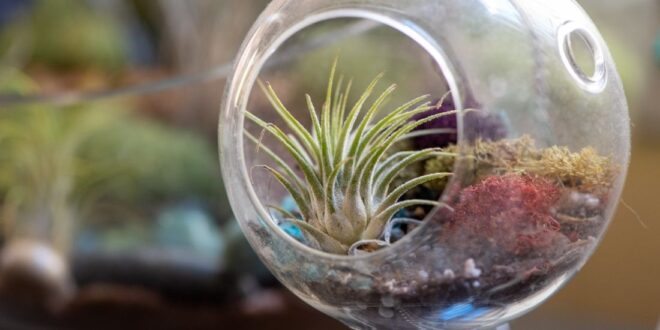Meet The Air Plant
Air plants, belonging to the genus Tillandsia, are fascinating epiphytes that require no soil to grow. They absorb water and nutrients through their leaves from the air around them. Their unique growth habit and diverse forms make them captivating additions to any indoor space. While they might seem low-maintenance due to their lack of soil, understanding their specific needs for light, water, and air circulation is crucial for their health and longevity.
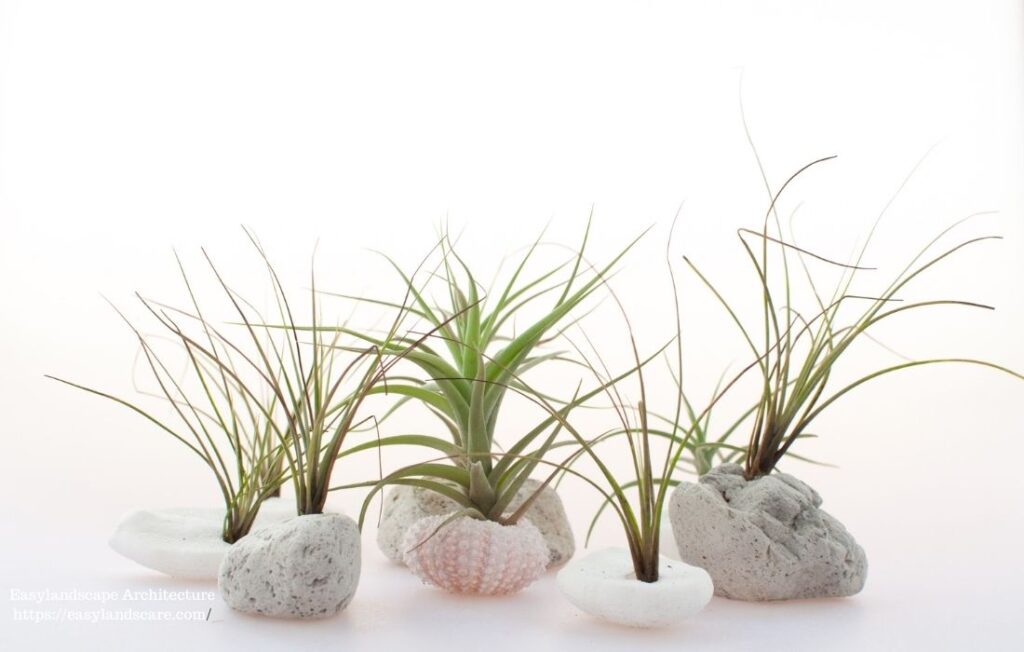
This guide provides a comprehensive overview of air plant care, covering essential aspects to help these intriguing plants thrive.
Why Choose Air Plants?
Air plants offer a unique and space-saving way to bring greenery into your home. Their diverse shapes, sizes, and textures, ranging from delicate and wispy to bold and sculptural, make them versatile for various display options—from terrariums and wall mounts to simply resting on decorative surfaces.
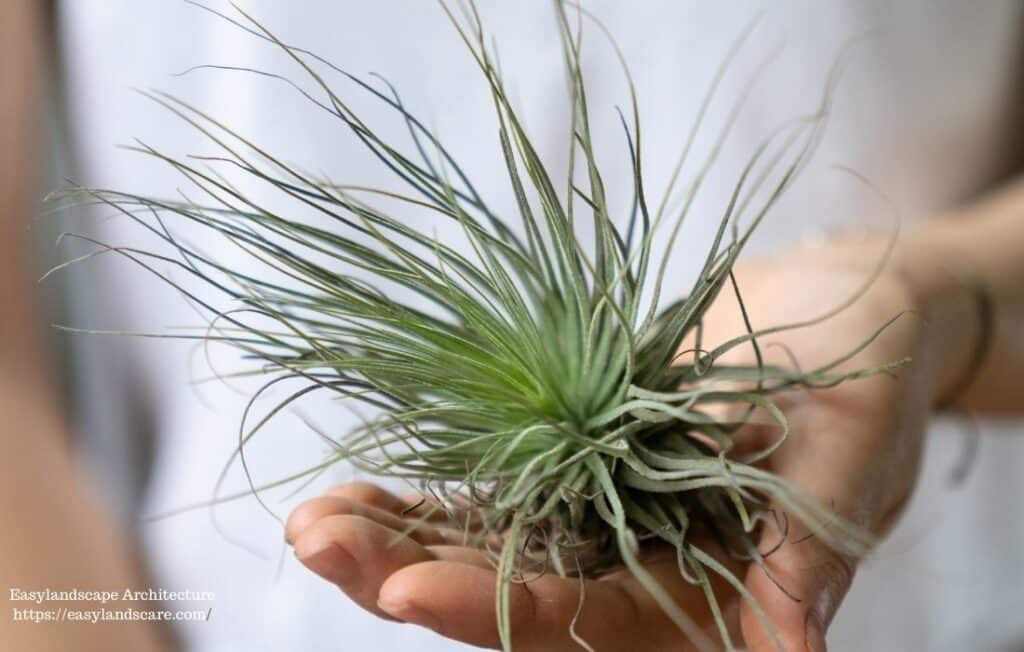
Their soil-free nature can also be appealing for those looking for a less traditional approach to plant care. The often-dramatic changes in color during blooming add another layer of intrigue to these fascinating plants.
Essential Tips for Air Plant Care
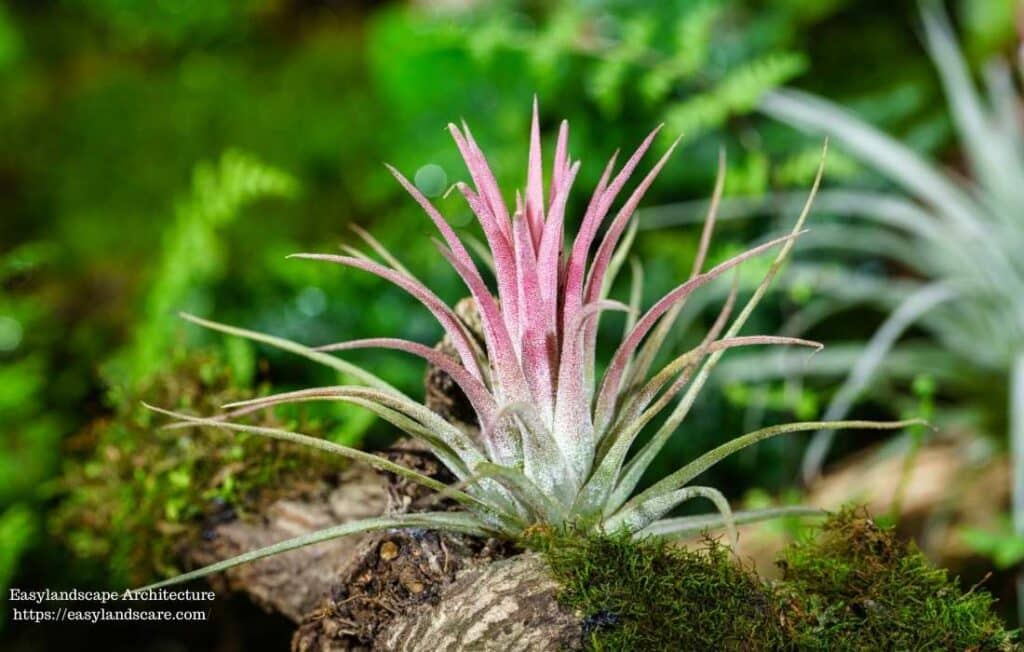
Light Requirements
Proper lighting is essential for air plant care:
- Bright, Indirect Light: Most air plants thrive in bright, indirect light. Think of the light levels found under a tree canopy.
- East or West-Facing Windows: These locations typically provide the gentle, yet sufficient light that air plants prefer.
- South-Facing Windows (with Protection): If placing near a south-facing window, especially during the hottest parts of the day, provide some shade with sheer curtains or move the plant slightly away from the window to prevent scorching.
- Artificial Light: Fluorescent grow lights can also provide adequate light for air plants, especially in dimly lit spaces. Aim for 12 hours of light per day.
- Avoid Direct, Intense Sunlight: Direct midday sun can quickly dehydrate and burn air plant leaves.
Watering and Hydration
Watering is a crucial aspect of air plant care:
- Soaking is Key: The primary method for watering most air plants is by soaking them fully submerged in room temperature water.
- Soaking Frequency: The frequency of soaking depends on your environment. In dry, warm conditions, soak 2-3 times per week for 20-30 minutes. In more humid or cooler conditions, once a week for the same duration may suffice. Observe your plant for signs of dehydration (excessively curled or wrinkled leaves).
- Thoroughly Wet All Parts: Ensure the entire plant, including the base, is fully submerged during soaking.
- Shake Off Excess Water: After soaking, gently shake off any excess water, especially from the base and crevices of the leaves, to prevent rot.
- Air Dry Upside Down: Allow your air plant to air dry completely upside down in a well-ventilated area. This is crucial to prevent water from pooling in the crown and causing rot, which is a common killer of air plants. Drying should take no more than 4 hours.
Air Circulation
Air circulation is vital for successful air plant care:
- Essential for Drying: Good air circulation is vital for air plants, especially after watering. It helps them dry quickly and prevents the buildup of moisture that can lead to rot.
- Well-Ventilated Locations: Choose locations with good airflow, away from stagnant air. Open windows or a gentle fan can be beneficial.
- Avoid Enclosed, Humid Environments (after watering): While they appreciate humidity, enclosed, humid environments without adequate airflow can trap moisture and promote rot after soaking.
Temperature Preferences
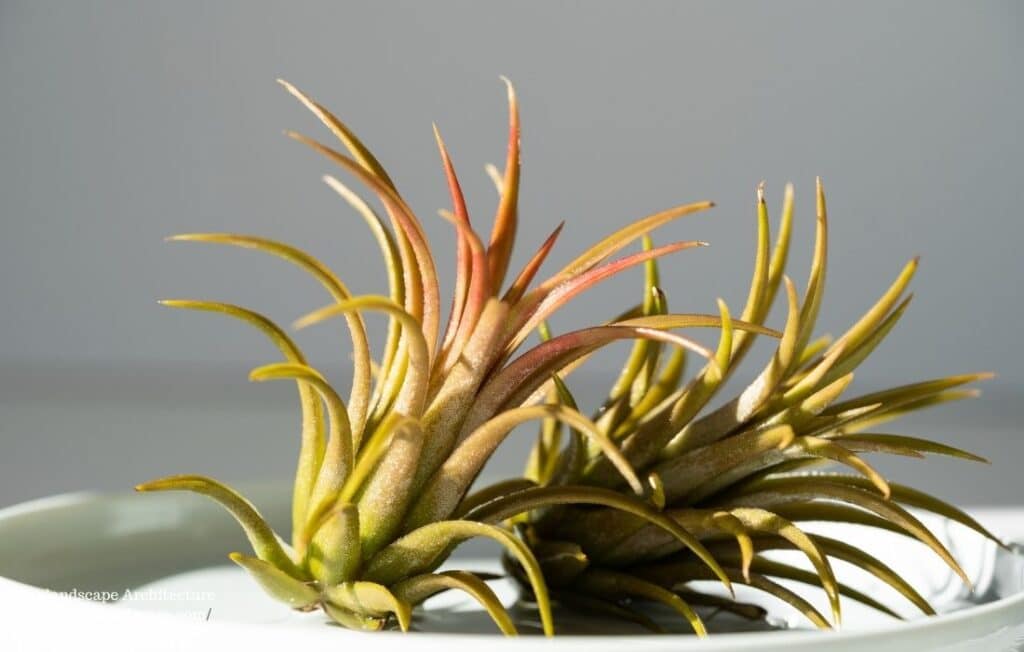
Temperature management is important for air plant care:
- Ideal Range: Air plants generally prefer temperatures between 15-30°C (60-85°F), which aligns with typical indoor temperatures.
- Avoid Extreme Temperatures: Protect your air plants from freezing temperatures and prolonged exposure to extreme heat.
Humidity
Humidity plays a significant role in air plant care:
- Appreciate Humidity: Most air plants appreciate moderate to high humidity levels.
- Signs of Low Humidity: Brown or crispy leaf tips can indicate low humidity.
- Increase Humidity By: Misting lightly between soakings (ensure the plant dries quickly afterward), placing them near a humidifier, or grouping them together. However, misting alone is usually not sufficient for their hydration needs; soaking is still essential.
Fertilizing (Sparingly)
Fertilizing is a part of comprehensive air plant care:
- Occasional Feeding: Air plants can benefit from occasional, very diluted fertilization during their growing season (typically spring and summer).
- Use Air Plant Specific Fertilizer or Diluted Bromeliad Fertilizer: Use a fertilizer specifically formulated for air plants or a balanced, water-soluble bromeliad fertilizer diluted to 1/4 strength.
- Fertilize During Soaking: Add the diluted fertilizer to the soaking water every 2-4 weeks during the growing season.
- Rinse Afterwards: After soaking with fertilizer, rinse the plant briefly under fresh water to prevent salt buildup.
- Avoid Over-Fertilizing: Over-fertilizing can burn the leaves.
Mounting and Display
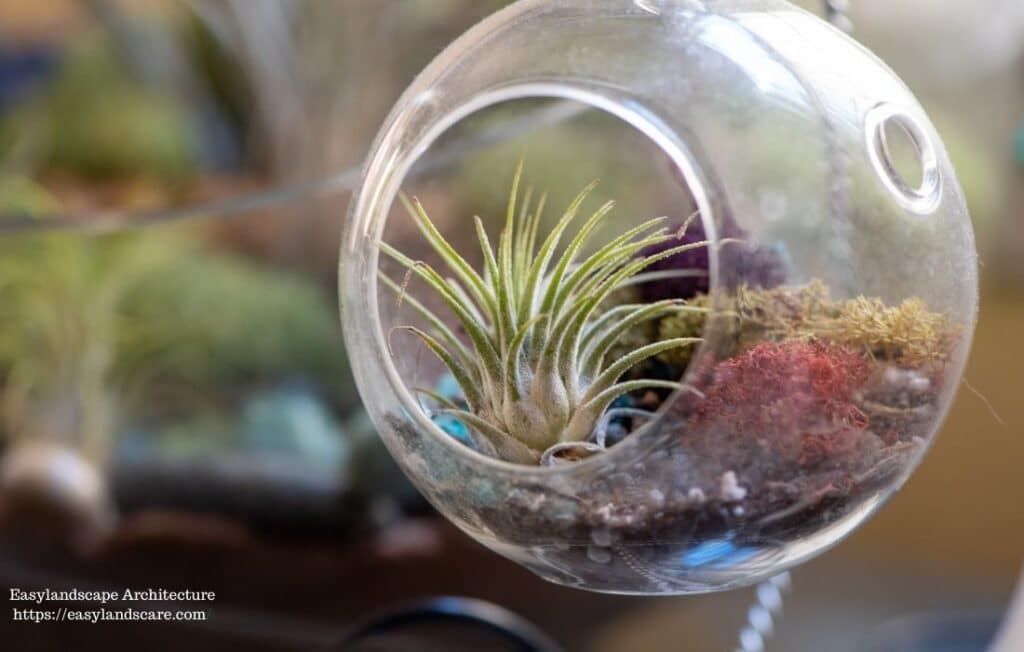
Creative display is part of the charm of air plant care:
- Consider Airflow: When mounting or displaying your air plant, ensure good air circulation around all parts of the plant.
- Safe Materials: Use materials that won’t trap moisture or leach harmful chemicals. Wire, fishing line, cork bark, and certain types of glue (cyanoacrylate-based or silicone) are often used.
- Avoid Copper: Never use copper wire or containers, as copper is toxic to air plants.
- Allow for Removal: If gluing, ensure you can eventually remove the plant for watering.
Blooming
Blooming is an exciting part of air plant care:
- Sign of Maturity: Blooming is a sign that your air plant has reached maturity.
- Color Change: Before blooming, many air plants will change color, often developing red, pink, or orange hues in their leaves.
- Single Bloom: Most air plants bloom only once in their lifetime.
- Offsets (Pups): After blooming, the mother plant will often produce offsets or “pups” at its base. These can eventually be separated to start new plants once they are about 1/3 to 1/2 the size of the mother plant.
Common Issues and Troubleshooting in Air Plant Care
Addressing common issues is crucial for effective air plant care:
- Brown or Crispy Leaf Tips:
- Low Humidity: Increase humidity.
- Insufficient Watering: Increase soaking frequency or duration.
- Tap Water Issues: Some air plants are sensitive to chlorine and other chemicals in tap water. Try using rainwater or distilled water.
- Rotting Base:
- Water Trapped in the Crown: Ensure thorough shaking after soaking and allow the plant to dry upside down.
- Overwatering: Adjust soaking frequency.
- Poor Air Circulation: Improve airflow around the plant.
- Dehydrated Plant (Excessively Curled or Wrinkled Leaves):
- Insufficient Watering: Increase soaking frequency or duration.
- Pale or Faded Color:
- Insufficient Light: Move the plant to a brighter location (indirect light).
- Pest Infestations (Scale, Mealybugs – less common but possible):
- Manual Removal: Gently remove pests with a cotton swab dipped in rubbing alcohol.
- Insecticidal Soap (use cautiously and rinse thoroughly).
Tips for Successful Air Plant Care
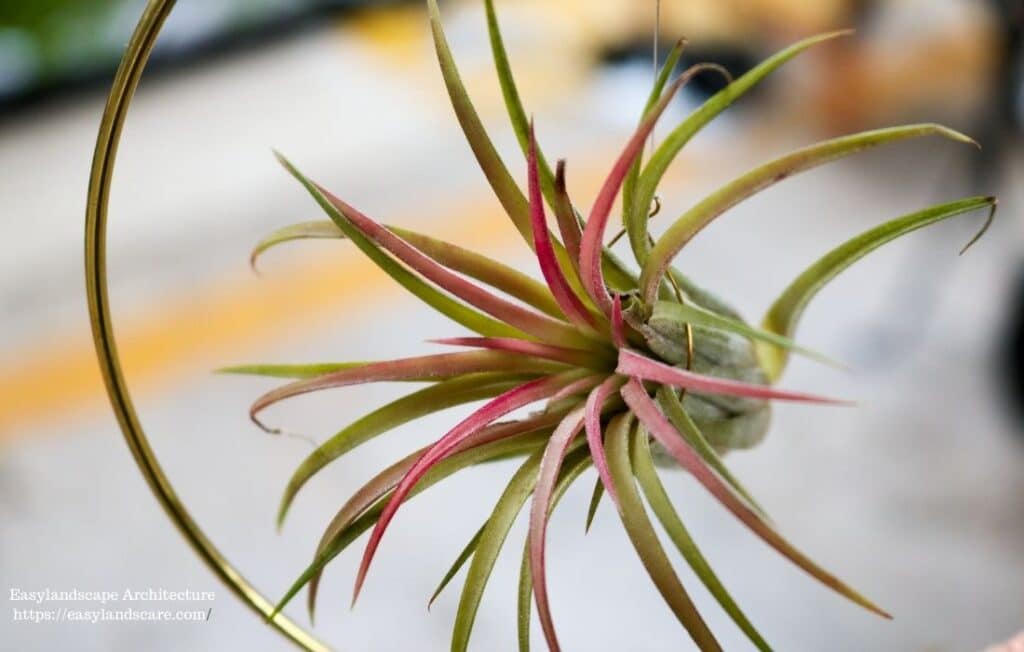
- Provide bright, indirect light.
- Soak thoroughly 1-3 times per week depending on your environment.
- Ensure excellent air circulation, especially during and after drying.
- Dry plants completely upside down after watering.
- Use room temperature, clean water for soaking.
- Fertilize sparingly during the growing season.
- Observe your plant closely for signs of dehydration or overhydration.
Caring for air plants is a unique and rewarding experience. By understanding their need for light, water (through soaking), and good air circulation, you can help these fascinating epiphytes thrive and enjoy their intriguing forms and potential for beautiful blooms. Remember that proper drying after watering is key to preventing rot, the most common pitfall in air plant care. If you liked this article, you might also be interested in our article on Best Indoor Plants: Top 15 Picks and Care Tips

